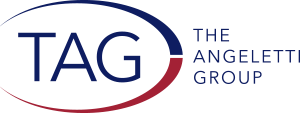What’s the Deal with Donor-Advised Funds?
Giving USA’s 2018 report, The Data on Donor-Advised Funds, provides new insights into the impact donor-advised funds have on philanthropy.
One of the fastest-growing giving vehicles of our time, donor-advised funds (DAFs) experienced a record-breaking year, growing nearly three times the rate of overall charitable giving in 2016. Contributions to DAFs grew 7.6 percent in 2016, outpacing the overall growth-rate in giving, but a fraction of the 18.3 annualized rate DAF contributions climbed between 2010 and 2015. Data is not yet available for 2017, but the assumption is that 2017 was a year of significant growth – and that aggregate DAF figures will continue to strengthen both due to the rallying stock market as well as the Tax Cuts and Jobs Act.
What is a DAF?
For fundraisers new to the DAF concept, think of it as a donor’s personal charitable savings account. A donor may contribute cash, stock, or other assets and can take an immediate tax deduction. The sponsoring company or other organization such as a community foundation owns the assets and the donor retains non-binding advisory privileges. With the new Tax Cuts and Jobs Act in mind, a donor can make one large donation and spread out distribution to the charities over multiple years. Despite their ease, DAFs are not without controversy because – unlike family foundations which are required to distribute 5 percent of their assets each year – DAFs have no distribution requirements.
Where are donor-advised funds going?
DAFs granted the greatest amount of funding to education (28%), public-society benefit (14%) and religion (14%), according to Giving USA’s comprehensive data from 2012-2015. DAFs’ granting differs from Giving USA’s measurements of overall charitable giving, where religion represents the top recipient comprising 31% of overall giving. Donor advised fund granting seems to reflect granting patterns of high worth donors, emphasizing giving to education over religion. Also, the relative popularity of education causes among DAF account holders can also be explained in the relative sophistication of recipients. For instance, a university is more likely to have the mechanisms in place to receive a DAF compared to a smaller church.
What does the future hold?
Giving USA’s first comprehensive report on DAFs represents a major step forward in understanding how DAF donors give. However, until more research is done, the best and most effective way to understand your nonprofit’s DAF donors is by connecting with the individuals who have them. As interest in DAFs continues, it also presents an opportunity for nonprofits to reach out to donors and share information about the new tax act and the possible benefits and impact of utilizing a DAF.
Sources:
- The Data on Donor-Advised Funds: New Insights You Need to Know, Giving USA Foundation, Spring 2018.
- National Philanthropic Trust, 2017 Donor-Advised Report.


